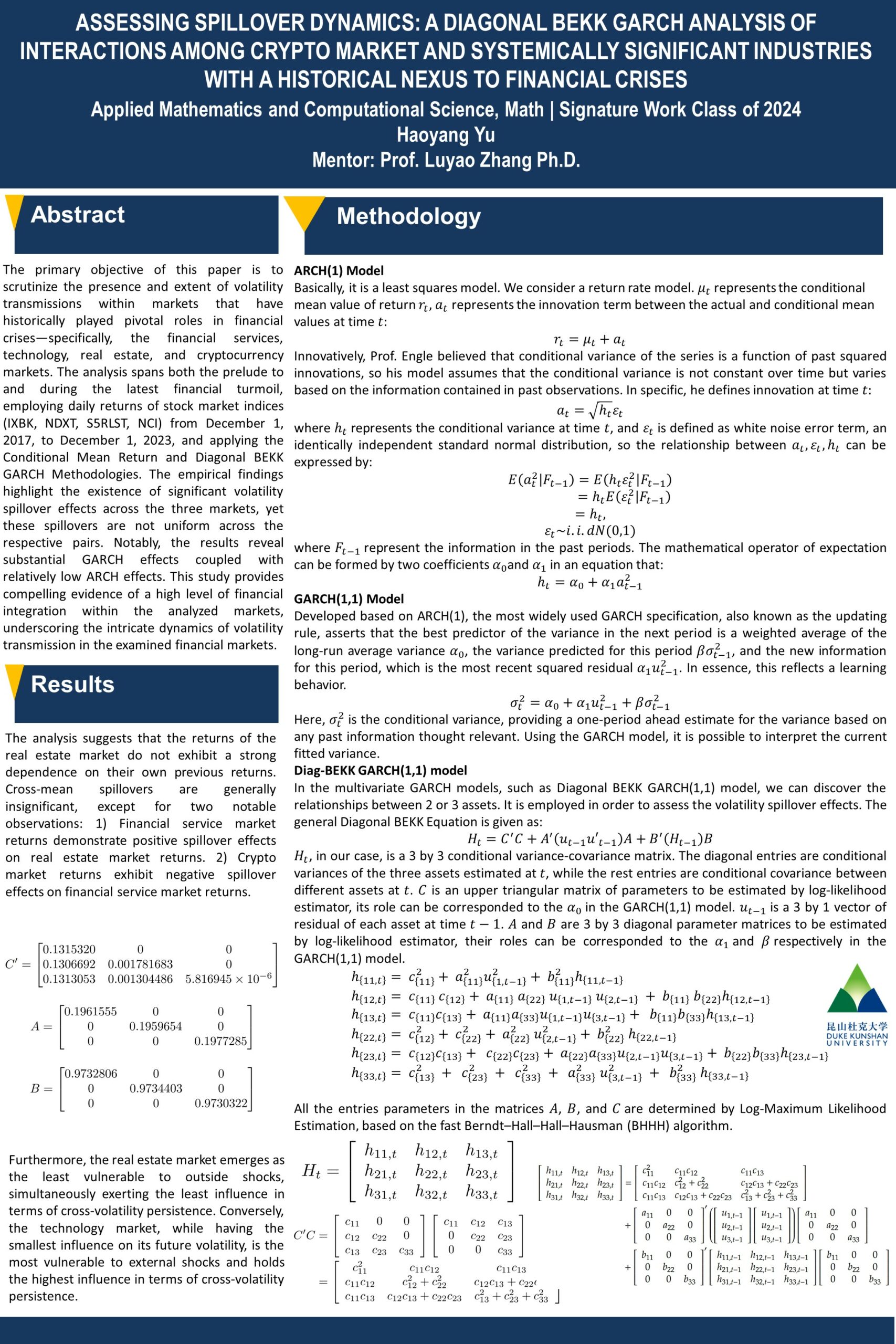Name
Haoyang Yu
Major
Applied Mathematics and Computational Science
Class
2024
About
Title: Assessing Spillover Dynamics: A Diagonal BEKK GARCH Analysis of Interactions Among the Crypto Market and Systemically Significant Industries with a Historical Nexus to Financial Crises
Author: Haoyang Yu
Affiliation: Division of Natural and Applied Sciences, Duke Kunshan University
Mentor: Prof. Luyao Zhang Ph.D.


